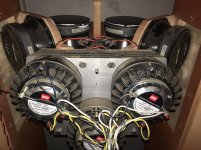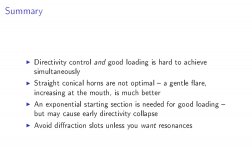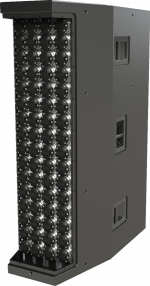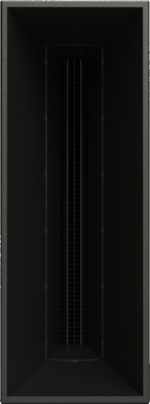That would be indicating some degradation from the long horn. IMO.
Sounds like you’re suggesting that the long horn is maybe hiding something?
How do we tell the difference as the above shows one snapshot per frequency? (or is the point something else)(propagating and evanescent)
Last edited:
More importantly, the actual measured results also confirm it 🙂.
Indeed, I somehow missed the crux of the matter 😎
How do we tell the difference as the above shows one snapshot per frequency? (or is the point something else)
The purpose is to show that a step in the horn generates modes and what modal coupling looks like.
Drivers are linear until they are not, and this is unlikely to happen in a home environment. Distortion is not a linear function of level, it comes on very quickly and is a substantial problem if it is allowed to happen.
drivers are linear...?? yeah, ok if you say so.
if distortion is not a function of level how does one prevent it's occurrence?
And then there is diffraction, which is a linear function of level, but has a very nonlinear perception.
although i disagree about diffraction's nature i fully agree it's perception is cause for misunderstanding
Excellent information, thank you.More importantly, the actual measured results also confirm it

Here is another source with respect to loading from Prof. W. Reichardt "Grundlagen der Elektroakustik", 3. Auflage.
It is like fake news to deny that the exponential horn has no better loading than the conical horn and that loading effects does not play any role:
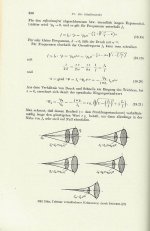
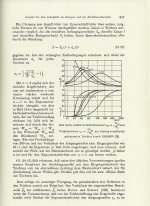
All examples have the same thraot, length and mouth. For n -> infinity (exponential horn) has the best - in german - Wirk- und Blindwiderstand.
It is like fake news to deny that the exponential horn has no better loading than the conical horn and that loading effects does not play any role:


All examples have the same thraot, length and mouth. For n -> infinity (exponential horn) has the best - in german - Wirk- und Blindwiderstand.
Ask Tom Danley which one has better loading characteristics. For his usual purposes, conical is better.
Ask Tom Danley which one has better loading characteristics. For his usual purposes, conical is better.
Of that I am not certain.
Honestly, I think it's the other way around.
Conical: best directivity characteristics at the price of poor loading.
Why does Danley mount multiple compression drivers in the Jerichos?
Exactly, in order to keep up with the (mid and low) woofers.
Attachments
Last edited:
Guys, correct me for sure....
but I thought the overriding reason Danley uses a conical horn is for the decreasing flare rate it provides moving from throat to mouth. That allows proper loading for drivers/frequencies as they enter the horn.
Maybe I don't understand the patent or what "loading" means, but it sure seems like horn loading is a huge design element. US6411718B1 - Sound reproduction employing unity summation aperture loudspeakers
- Google Patents
but I thought the overriding reason Danley uses a conical horn is for the decreasing flare rate it provides moving from throat to mouth. That allows proper loading for drivers/frequencies as they enter the horn.
Maybe I don't understand the patent or what "loading" means, but it sure seems like horn loading is a huge design element. US6411718B1 - Sound reproduction employing unity summation aperture loudspeakers
- Google Patents
This is what the Horn Doctor says:
Attachments
Last edited:
No, it's indicating that the compression driver is better behaved and contributing less of its own sound in a deep horn. That's a good thing.That would be indicating some degradation from the long horn. IMO.
Guys, correct me for sure....
but I thought the overriding reason Danley uses a conical horn is for the decreasing flare rate it provides moving from throat to mouth. That allows proper loading for drivers/frequencies as they enter the horn.
Maybe I don't understand the patent or what "loading" means, but it sure seems like horn loading is a huge design element. US6411718B1 - Sound reproduction employing unity summation aperture loudspeakers
- Google Patents
You are 100% correct. That is what I was referring to in my post. the 64 CDs of the J64 are there to compensate for the HF attenuation in air in the ludicrously long throw applications (stadium) that J64 was designed for.
You are 100% correct. That is what I was referring to in my post. the 64 CDs of the J64 are there to compensate for the HF attenuation in air in the ludicrously long throw applications (stadium) that J64 was designed for.
The J3-64's coverage pattern is 60° H and 40° V for a max. output of 149 dB SPL. There are 18 drivers in the horn. Six 15” woofers, eight 6.5” mids and four 1.4” highs.
The one with 64 B&C 1" comp. drivers is the J4-31, capable of 153 dB SPL, albeit with a very narrow 30 x 10° coverage pattern.
The specified operating frequency range is 600 Hz - 12 KHz with a recommend high pass at 3KHz.
At home, where 120 dB suffices for most of us, the same driver/throat section with a 90 x 60° mouth would probably allow 400-20k.
You'd still have to spend about $7-8000 on drivers though, for 1 cab. With Polyimide diaphrams instead of Titanium, it may sound decent.
Attachments
Last edited:
800-15k? Sure.
The Calpamos by Tony Gee is an example, another "slightly more expensive", but similar 2-way is the Strauss MF-2...
Pardon me, it's now MF-2.1.
The specs seem too good to be true, but the designer has a very good reputation in the high-end mixing/mastering industry at stake.
I have yet to encounter a negative comment on the predessor, which looks identical (apart from the woofer) and has been around since 2000.
SE-MF-2.1
Drivers:
- 2” compression driver, metal alloy diaphragma, neodymium magnet circuit
- 15” LIT woofer, coated paper cone, neodymium magnet circuit
Sensitivity: 93 dB / 1 W / 1m
Impedance: 8 Ohm
Power: 200 W RMS
Frequency range: 23 Hz – 26 KHz (-* 6 dB)
Crossover frequency: 400 Hz
Distortion THD: < 0.3 % (93 dB / 1m / 100 Hz – 26 KHz)
Dispersion: 90° horizontal, 40° vertical
Weight: 110 kg / 220 lbs
Dimensions: height 1200 mm, width 530 mm, depth 490 mm
Don't you just love the look of the MF 2.1? great monitor!
Yep, it's a stunning piece of engineering. Perhaps a benchmark large format monitor loudspeaker.
I was invited by the manufacturer for a demo, which I'll happily reconsider, if I am in the neighbourhood.
I was invited by the manufacturer for a demo, which I'll happily reconsider, if I am in the neighbourhood.
Last edited:
The J4-31 is a high frequency horn with 64 compression drivers. It's nutz. Like a high frequency flashlight/searchlight. Not quite a laser beam, but it feels like it.
the overriding reason Danley uses a conical horn is for the decreasing flare rate it provides moving from throat to mouth.
If we assume that the conical horn is axisymmetric, then the "flare rate" (by definition - the rate at which the radius changes) will be constant. The rate at which the cross-sectional area (Pi x radius ^ 2) changes will increase (not decrease) moving from throat to mouth.
- Home
- Loudspeakers
- Multi-Way
- Is it possible to cover the whole spectrum, high SPL, low distortion with a 2-way?

